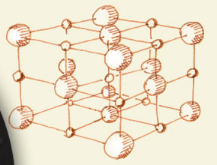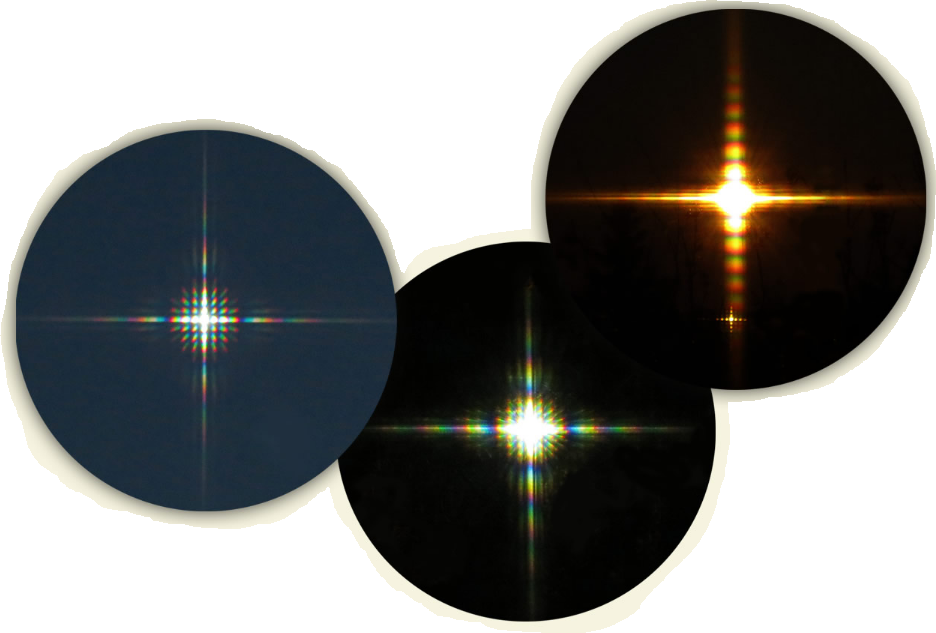Venus & Diffraction Gratings - OPOD
Venus & Diffraction Gratings - OPOD
Have you ever looked at Venus through a wire mesh screen and noticed a colorful, grid-like pattern surrounding the planet? This intriguing phenomenon is caused by diffraction, a property of light that occurs when it encounters an obstacle or aperture. In this blog post, we will explore the fascinating world of diffraction gratings and how they create mesmerizing patterns when observing celestial objects like Venus.
The Science of Diffraction
When light passes through a grating, such as a wire mesh screen, it is diffracted into different directions. However, only some of the diffracted light reaches the far field, where it can be observed. The rays of light that contribute to the first order diffraction spectrum are those that have a path difference of one complete wavelength from adjacent openings. Similarly, second order spectrum rays have a path difference of two wavelengths, and so on. Rays in other directions with path lengths differing from a whole number of wavelengths overlap and interfere destructively, resulting in darkness.
To create a visible diffraction pattern, a grating must have numerous equally spaced openings. In the case of the wire mesh screen, the grid-like diffraction pattern of Venus is produced by the interaction of light with the square mesh of wires, which are spaced 1.5mm apart. It's important to note that the diffraction pattern is more apparent when observing Venus from a distance using a telephoto lens, as opposed to being up close.
Exploring Diffraction Gratings
The wire mesh screen mentioned earlier is an example of a two-dimensional diffraction grating. It emits highly directed orders of diffracted light, with the central, zero order light being nominally undiffracted. Surrounding it are successively higher orders, each creating a mini-spectrum. This phenomenon can be observed not only in wire mesh screens but also in various natural structures, such as the vibrant colors of a peacock's tail or the iridescent blues of a butterfly wing.
On a smaller scale, crystals act as three-dimensional diffraction gratings. The impeccably ordered rows of atoms and ions in crystals scatter x-rays or neutrons, creating intricate patterns that can be deciphered to reveal the crystal's structure. This is known as x-ray diffraction, and it has been instrumental in uncovering the atomic structures of various substances. For example, the famous image captured by Rosalind Franklin and her student Raymond Gosling in 1951 provided crucial insights into the structure of DNA. By analyzing the diffraction pattern, Franklin deduced that DNA is helical in shape, with a specific pitch, diameter, and even a second co-axial helix.
Practical Applications
The study of diffraction and diffraction gratings has practical applications beyond scientific research. Diffraction gratings are commonly used in spectroscopy to separate light into its constituent wavelengths. This technique allows scientists to analyze the composition of substances based on the unique patterns of light they emit or absorb. Diffraction gratings also find applications in various optical devices, such as spectrometers, lasers, and even barcode scanners.
Conclusion
In conclusion, diffraction gratings play a significant role in our understanding of light and its interactions with different structures. Whether observing Venus through a wire mesh screen or unraveling the complex structures of crystals using x-ray diffraction, diffraction gratings provide us with valuable insights into the nature of light and matter. So next time you gaze at the night sky or examine the intricacies of a crystal, take a moment to appreciate the beautiful patterns created by diffraction and the wonders they reveal.

Venus through a screen brightly
Venus was low in the Calgary, Alberta evening sky when Alan Clark pictured it shining through the wire mesh screen of a newly installed window.
The screen, a square mesh of wires 1.5mm apart has scattered Venus�s bright light into a colourful, grid-like diffraction pattern.
This is a telephoto shot from a distance (500mm lens on a Canon 30D). Screen diffraction is not apparent close up unless the grid size is much smaller.
©Alan Clark, shown with permission

Orders of order
Light is diffracted initially by a grating into all directions. Only some of it reaches any distance � the far field.
The successful rays of the first order diffraction spectrum are in a direction that those from adjacent openings have a path difference of one complete wavelength.
Second order spectrum rays come from rays having a path difference of two wavelengths from adjacent openings. And so on. Rays in other directions that have path lengths differing from a whole number of wavelengths eventually overlap and interfere destructively to give darkness.
Only two openings are pictured. To have sufficient angular and thus spectral resolution a grating must have tens, hundreds or thousands of equally spaced openings.

2-D Grating
The window mesh is a two-dimensional diffraction grating.
It sends out highly directed orders of diffracted light.
The central, zero order, light is nominally undiffracted. Around it are successively higher orders, each one a a mini-spectrum.

Salt is a face centered cubic array of positive sodium ions (small spheres) and negatively charged chloride ions. Convention shows them well separated but in reality they pack closely.

3-D gratings
We see the action of 3-D gratings in the colours of a peacock�s tail and the vivid iridescent blues of a butterfly wing.
On a much smaller scale, crystals act as 3-D gratings. Their immaculately ordered rows of atoms and ions scatter x-rays or neutrons (acting as waves) to form enigmatic spotty patterns that with some guile can be unwound to reveal the crystal�s structure.
At right a Laue photograph of common salt (after Von Laue who first recorded x-ray diffraction by a crystal). A salt crystal is illuminated by a narrow x-ray beam of wavelength comparable to atomic dimensions. Each spot of the diffraction pattern is a diffracted beam of x-rays from planes of atoms of a particular direction. Analysis gives the atomic structure and the distances between the atoms/ions.


The stuff of life
At right: The epochal image made in 1951 by Rosalind Franklin and her student Raymond Gosling. She produced filaments of hydrated calf thymus DNA as would exist in a living cell. She reasoned that the molecules would be fairly well aligned in the thin strands and thus give decent x-ray diffraction images.
The resulting pattern was the most informative ever obtained. From it she deduced that (1) DNA was helical (the cross shouts out �helix� and gives the helix angle). (2) The fine structure in the cross gave the helix pitch, (3) its diameter and (4) that there are 10 layer subunits to each helix turn. The missing diffraction spot (red circle) said (5) that there is a second co-axial helix present staggered 3/8 of a turn from the first. A double helix.
All this from an unprepossessing blur!
Key aspects of Rosalind Franklin's experiment can be done at home with an old ball-point pen and a laser pointer

Back to wire screens
Left to right are Venus, a mercury street lamp and a high pressure sodium lamp. The wire mesh starts to reveal the discrete line spectrum of excited mercury vapour.
Note: this article has been automatically converted from the old site and may not appear as intended. You can find the original article here.
Reference Atmospheric Optics
If you use any of the definitions, information, or data presented on Atmospheric Optics, please copy the link or reference below to properly credit us as the reference source. Thank you!
-
<a href="https://atoptics.co.uk/blog/venus-diffraction-gratings-opod/">Venus & Diffraction Gratings - OPOD</a>
-
"Venus & Diffraction Gratings - OPOD". Atmospheric Optics. Accessed on December 22, 2024. https://atoptics.co.uk/blog/venus-diffraction-gratings-opod/.
-
"Venus & Diffraction Gratings - OPOD". Atmospheric Optics, https://atoptics.co.uk/blog/venus-diffraction-gratings-opod/. Accessed 22 December, 2024
-
Venus & Diffraction Gratings - OPOD. Atmospheric Optics. Retrieved from https://atoptics.co.uk/blog/venus-diffraction-gratings-opod/.